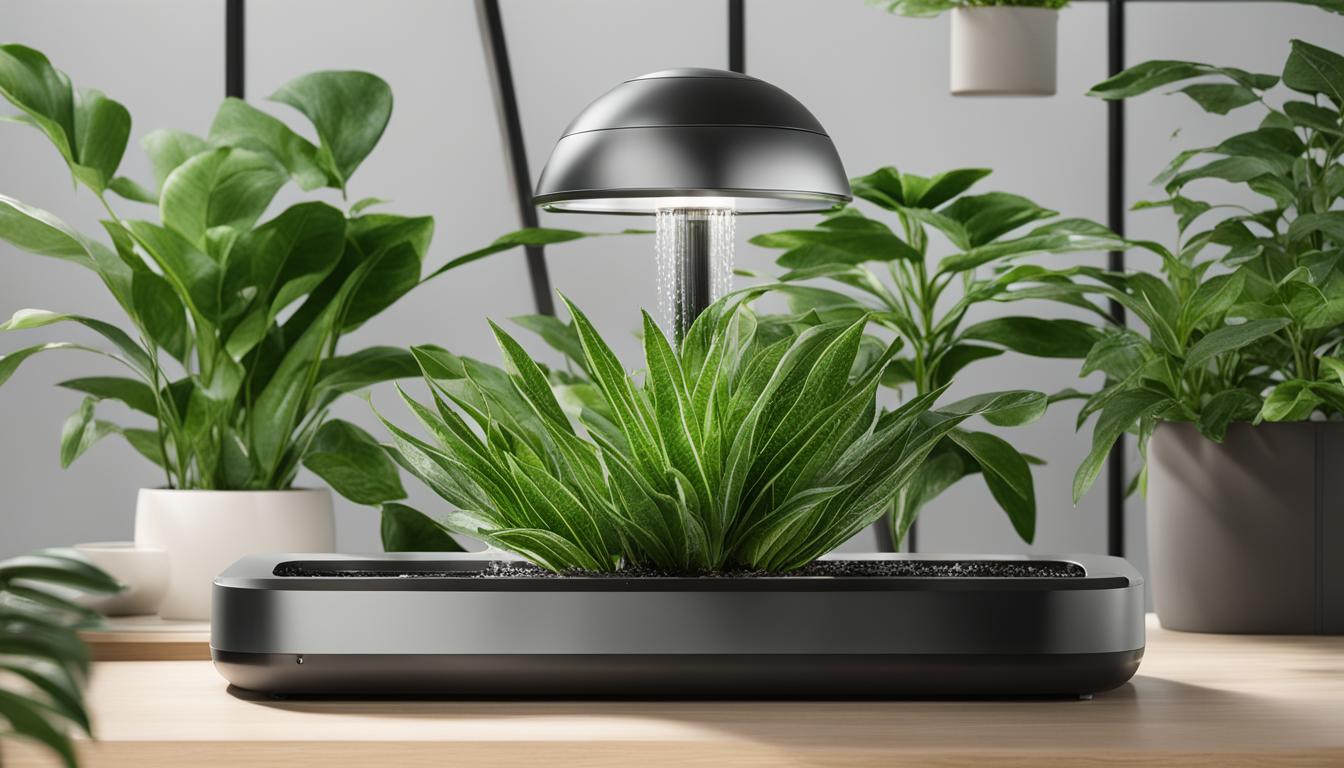
Automated indoor plant care systems are devices capable of “taking care” of plants with little to no human intervention. These systems automate tasks such as watering, fertilizing, and providing light to indoor plants.
They use various sensors and timers to monitor and adjust the plant’s environment to ensure optimal growth conditions. Automated indoor plant care systems are becoming increasingly popular as they offer convenience and help plants thrive in indoor spaces.
Key Takeaways:
- Automated indoor plant care systems automate tasks such as watering, fertilizing, and providing light to indoor plants.
- These systems use sensors and timers to monitor and adjust the plant’s environment for optimal growth conditions.
- Automated indoor plant care systems offer convenience and help plants thrive in indoor spaces.
- They are becoming increasingly popular among individuals who want to enjoy the beauty of indoor plants without the stress of plant care.
- Choosing the right automated plant care system depends on factors such as individual plant needs, budget, and personal preferences.
The Benefits of Automated Indoor Plant Care Systems
Automated indoor plant care systems offer numerous benefits for individuals looking to enjoy the beauty of indoor plants without the hassle of manual plant care.
These systems provide convenience by automating tasks such as watering, fertilizing, and providing light to plants, saving time and effort for plant owners.
With automated systems, you no longer have to worry about forgetting to water your plants or being away from home for extended periods; the system takes care of it for you.
One of the key advantages of automated indoor plant care systems is their ability to promote plant health. These systems ensure that plants receive the proper amount of water, light, and nutrients, creating optimal growth conditions.
By monitoring factors like humidity, temperature, and light intensity, automated systems can adjust the plant’s environment to meet its specific needs. This results in healthier, thriving plants that enhance the aesthetics and air quality of your indoor spaces.
Aside from convenience and plant health, automated indoor plant care systems also offer time-saving benefits. With these systems in place, you no longer have to spend time manually taking care of each plant.
Instead, you can focus on other activities or simply enjoy your indoor garden without the added tasks of plant care. Whether you’re a busy professional or simply want to streamline your plant care routine, automated systems provide an efficient solution.
| Benefits of Automated Indoor Plant Care Systems |
|---|
| Convenience |
| Plant health |
| Time-saving |
| Optimal growth conditions |
Overall, automated indoor plant care systems offer a range of benefits that make plant ownership more enjoyable and convenient.
By taking care of essential tasks and ensuring optimal growth conditions, these systems enable individuals without a green thumb to successfully maintain indoor plants.
With the time-saving and plant health benefits they provide, automated systems are a valuable addition to any indoor garden.
Types of Automated Indoor Plant Care Systems
When it comes to automated indoor plant care systems, there are several types to choose from. Each type offers its own set of features and benefits, catering to different needs and preferences.
Let’s take a closer look at the four main types of automated plant care systems: the wick system, timers, soil moisture sensors, and artificial intelligence-based systems.
The Wick System
The wick system is a simple hydroponic setup that uses a fabric wick to deliver water and nutrients to the plants’ roots. This system is affordable and easy to maintain, making it a popular choice for indoor plant enthusiasts.
It’s important to note that wick systems may not be suitable for all plant varieties, as they can lead to overwatering and root rot if the soil remains constantly damp.
Timers
Timers are devices that control watering schedules based on preset intervals or specific times. They offer convenience and precise control over watering, allowing plants to receive water at consistent intervals.
Timers alone may not consider other factors such as soil moisture levels or individual plant needs, which can lead to overwatering or underwatering if not properly adjusted.
Soil Moisture Sensors
Soil moisture sensors are designed to monitor the moisture levels in the soil and water the plants only when necessary. These sensors prevent overwatering and ensure that plants receive the right amount of moisture for their optimal growth.
Soil moisture sensors alone may not take into account other factors like light intensity, temperature, or nutrient levels, which also play a crucial role in plant health.
Artificial Intelligence-Based Systems
Artificial intelligence-based systems represent the most advanced form of automated plant care. These systems use sensors, algorithms, and machine learning to analyze plant needs and adjust the environment accordingly.
They offer precise control over factors like water, light, temperature, and nutrients, creating optimal growth conditions for plants. However, due to their complexity, these systems may be more expensive and require a higher level of technical knowledge to set up and maintain.
| Type of System | Pros | Cons |
|---|---|---|
| Wick System | Affordable and easy to maintain | Potential for overwatering and root rot |
| Timers | Precise control over watering schedules | May not consider other factors and plant-specific needs |
| Soil Moisture Sensors | Prevent overwatering and ensure optimal moisture levels | Do not account for other environmental factors |
| Artificial Intelligence-Based Systems | Precise control over multiple growth factors | Higher cost and complexity |
Wick Systems: Pros and Cons
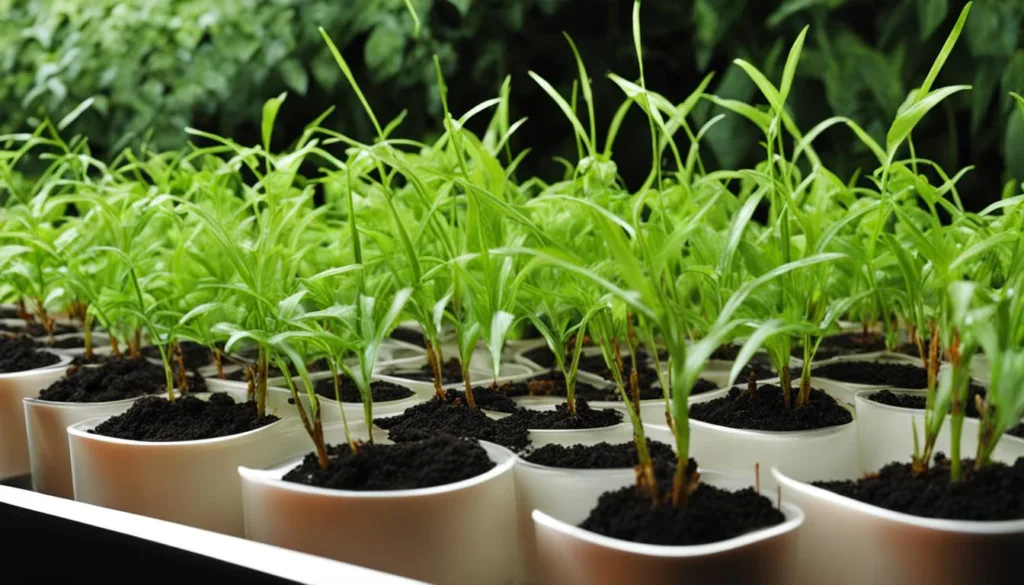
Wick systems are a popular automated plant care technology in the realm of indoor gardening. These systems use a simple hydroponic setup that employs a fabric wick to deliver water and nutrients directly to the plants’ roots. Wick systems offer several advantages, making them a go-to choice for many plant enthusiasts.
One of the key benefits of wick systems is their affordability and ease of maintenance. They require minimal setup and are cost-effective compared to other automated plant care systems. Also, wick systems provide a consistent water supply to the plants, ensuring they receive the necessary hydration.
However, there are some drawbacks to consider when using wick systems. One significant limitation is the potential for overwatering and root rot if the soil remains constantly damp.
This can be detrimental to plants that require well-drained soil. Furthermore, wick systems may not be suitable for large or fast-growing plants as they might not deliver enough water to meet the plants’ needs.
| Pros | Cons |
|---|---|
| Affordable and easy to maintain | Potential for overwatering and root rot |
| Consistent water supply | Not suitable for large or fast-growing plants |
Wick systems are a cost-effective and low-maintenance option for automated plant care in indoor spaces. They provide a steady water supply to plants, ensuring adequate hydration. However, the risk of overwatering and limited suitability for larger plants should be considered when using wick systems.
Timers: Pros and Cons
Timers are a popular type of automated plant care system that allows for precise control over watering schedules. They offer the convenience of automatically watering plants at predetermined intervals or specific times.
One of the key advantages of timers is their ability to save time and effort by eliminating the need for manual watering. They provide consistency in water supply, ensuring that plants receive adequate hydration even when you’re away or busy.
However, timers do have some limitations. They operate solely based on preset schedules and do not take into account other factors such as soil moisture levels or specific plant needs.
This lack of adaptability can result in overwatering or underwatering, which can be detrimental to plant health. To mitigate these risks, it’s essential to have a good understanding of your plants’ watering requirements and adjust the timer settings accordingly.
Pros and Cons of Timers
| Pros | Cons |
|---|---|
| Automates watering schedules | Does not consider soil moisture levels |
| Saves time and effort | May result in overwatering or underwatering |
| Provides consistency in watering | Requires knowledge of individual plant needs |
It’s important to note that timers can be a helpful tool for experienced plant owners who have a good understanding of their plants’ watering needs.
By combining timers with other monitoring systems, such as soil moisture sensors or manual observations, you can create a more comprehensive and effective plant care routine.
Ultimately, the success of using timers as an automated plant care system depends on your knowledge and ability to tailor the watering schedules to your plants’ specific requirements.
Soil Moisture Sensors: Pros and Cons
Soil moisture sensors are an essential component of automated plant care systems. These sensors monitor the moisture levels in the soil and play a crucial role in maintaining plant health. Let’s explore the pros and cons of using soil moisture sensors in your indoor gardening endeavors.
The Pros of Soil Moisture Sensors
- Efficient Water Usage: Soil moisture sensors ensure that plants are watered only when necessary, preventing overwatering or underwatering. This efficient water usage not only conserves water but also promotes plant health by avoiding water-related stress.
- Precise Monitoring: Soil moisture sensors provide real-time data on soil moisture levels, allowing you to accurately determine when your plants need watering. This level of precision eliminates guesswork and helps you maintain optimal moisture conditions for healthy plant growth.
- Time and Effort Savings: By automating the watering process based on soil moisture levels, soil moisture sensors save you time and effort in plant care. You no longer need to manually check the soil or rely on timers, ensuring your plants receive the water they need without constant monitoring.
The Cons of Soil Moisture Sensors
- Limited Scope: While soil moisture sensors are crucial for maintaining proper watering, they do not consider other environmental factors such as light intensity, temperature, and nutrient levels. To ensure overall plant health, it is important to complement soil moisture sensors with other monitoring systems or manual observations.
- Cost Considerations: Implementing soil moisture sensors can be an additional cost to consider in your indoor gardening setup. However, the long-term benefits of water conservation and plant health may outweigh the initial investment.
- Technical Complexity: Soil moisture sensors require proper installation and calibration to accurately measure soil moisture levels. Technical knowledge may be needed to ensure the sensors are functioning correctly and providing reliable data.
Soil moisture sensors offer significant advantages in maintaining proper watering practices and promoting plant health. However, they should be complemented with other monitoring systems and manual observations to consider other vital factors.
By understanding the pros and cons, you can make an informed decision about incorporating soil moisture sensors into your automated indoor plant care system.
Artificial Intelligence-Based Systems: Pros and Cons
Artificial intelligence-based systems are the pinnacle of automated plant care technologies. These systems utilize advanced sensors, algorithms, and machine learning to analyze plant needs and adjust the environment accordingly.
By providing precise control over factors like water, light, temperature, and nutrients, artificial intelligence-based systems create optimal growth conditions for plants.
One of the major advantages of artificial intelligence-based systems is their ability to eliminate the need for manual monitoring and intervention.
They can continuously analyze plant requirements and make real-time adjustments to ensure plants receive the optimal care they need. This level of automation frees up time and effort for plant owners, allowing them to enjoy indoor gardening without the stress of constant maintenance.
However, it’s important to consider the potential drawbacks of artificial intelligence-based systems. These systems may be more expensive and complex to set up compared to other automated plant care technologies.
The integration of advanced sensors and algorithms adds to the overall cost and complexity of the system. Additionally, users may require some knowledge and understanding of the technology to maximize its benefits and avoid potential issues.
Pros and Cons of Artificial Intelligence-Based Systems:
| Pros | Cons |
|---|---|
| Precise control over water, light, temperature, and nutrients | Higher cost and complexity compared to other systems |
| Eliminates the need for manual monitoring and intervention | Requires some knowledge and understanding of the technology |
Despite the potential drawbacks, artificial intelligence-based systems offer unparalleled convenience and the ability to create optimal growth conditions for indoor plants. These systems take automated plant care to the next level, providing plant owners with a seamless and effective way to care for their plants, even without a green thumb.
Choosing the Right Automated Indoor Plant Care System

When it comes to selecting an automated indoor plant care system, there are several important factors to consider. By taking these factors into account, you can ensure that you choose the right system to meet the individual needs of your plants.
1. Assess your plant’s specific requirements: Different plants have different needs when it comes to watering, light exposure, and nutrient levels. Consider the specific requirements of your plants and select a system that can cater to these needs.
2. Consider the size and number of your plants: Take into account the size and number of plants you have. Some systems may be better suited for smaller plants, while others can accommodate larger or multiple plants.
3. Evaluate the features and capabilities: Look into the features and capabilities of different automated plant care systems. Consider factors such as timers, sensors, or artificial intelligence-based systems. Choose a system that aligns with your preferences and offers the level of automation you desire.
4. Budget and maintenance requirements: Lastly, consider your budget and maintenance capabilities. Some systems might be more costly upfront, while others may require more frequent maintenance. Determine what you are willing to spend and how much effort you can put into maintaining the system.
By carefully assessing these factors, you can make an informed decision and choose the right automated indoor plant care system that will provide your plants with the care they need to thrive.
Automated indoor plant care systems offer a convenient and hassle-free way to ensure the health and vitality of your indoor plants.
These systems take care of tasks such as watering, providing light, and monitoring environmental conditions, allowing you to enjoy the beauty of indoor plants without the stress of daily maintenance.
With automated plant care systems, you can have peace of mind knowing that your plants are receiving the right amount of water, light, and nutrients they need to thrive.
These systems create optimal growth conditions by adjusting factors like humidity, temperature, and light intensity. As a result, your plants will flourish and bring life to your indoor space.
Not only do automated indoor plant care systems provide convenience, but they also contribute to the overall health and well-being of your plants.
By eliminating the guesswork and human error associated with manual plant care, these systems ensure that your plants receive consistent and proper care, resulting in healthier and more vibrant foliage.
When choosing an automated indoor plant care system, consider the specific needs of your plants, the size of your indoor garden, and your budget.
Whether you opt for a simple wick system, a timer-based setup, a soil moisture sensor, or an advanced artificial intelligence-based system, selecting the right system will help you create a thriving green oasis in your home.
FAQ
What are automated indoor plant care systems?
Automated indoor plant care systems are devices that automate tasks such as watering, fertilizing, and providing light to indoor plants. They use sensors and timers to monitor and adjust the plant’s environment to ensure optimal growth conditions.
What are the benefits of automated indoor plant care systems?
Automated indoor plant care systems provide convenience by taking care of the plants’ needs automatically, reducing the time and effort required for plant care. They ensure that plants receive the proper amount of water, light, and nutrients, resulting in healthier and thriving plants.
What are the different types of automated indoor plant care systems?
The different types of automated indoor plant care systems include wick systems, timers, soil moisture sensors, and artificial intelligence-based systems.
What are the pros and cons of wick systems?
Wick systems are affordable and easy to maintain. However, they can lead to overwatering and may not provide enough water for large or fast-growing plants.
What are the pros and cons of timers?
Timers offer precise control over watering schedules. However, they do not consider other factors such as soil moisture levels or plant-specific needs.
What are the pros and cons of soil moisture sensors?
Soil moisture sensors ensure plants are watered only when necessary, preventing overwatering or underwatering. However, they do not consider other factors such as light intensity, temperature, and nutrient levels.
What are the pros and cons of artificial intelligence-based systems?
Artificial intelligence-based systems offer precise control over water, light, temperature, and nutrients. However, they may be more expensive and complex to set up compared to other automated plant care technologies.
How do I choose the right automated indoor plant care system?
When choosing an automated indoor plant care system, consider the specific needs of your plants, the size and number of plants you have, the features and capabilities of different systems, and your budget and maintenance requirements.


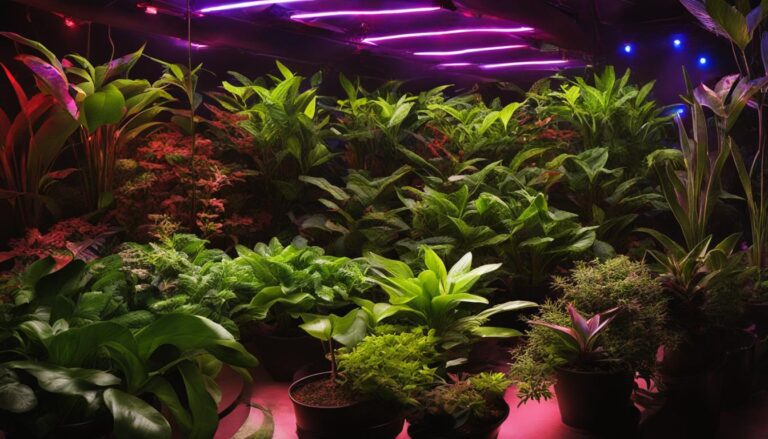
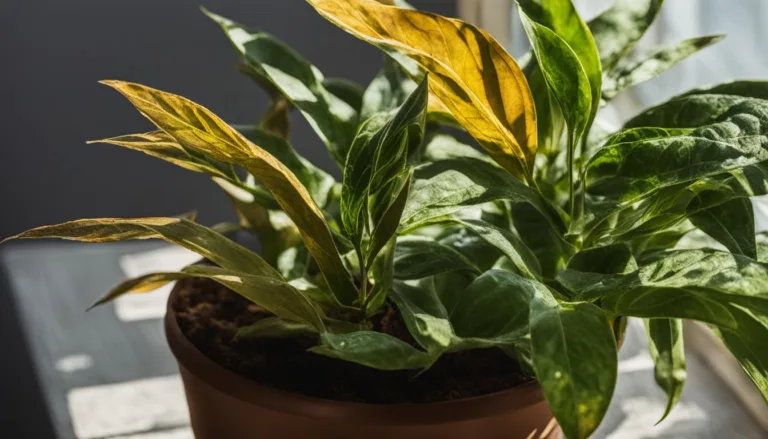
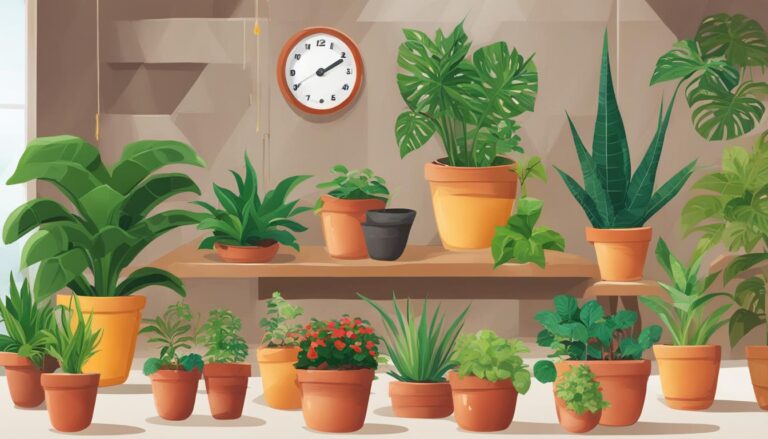

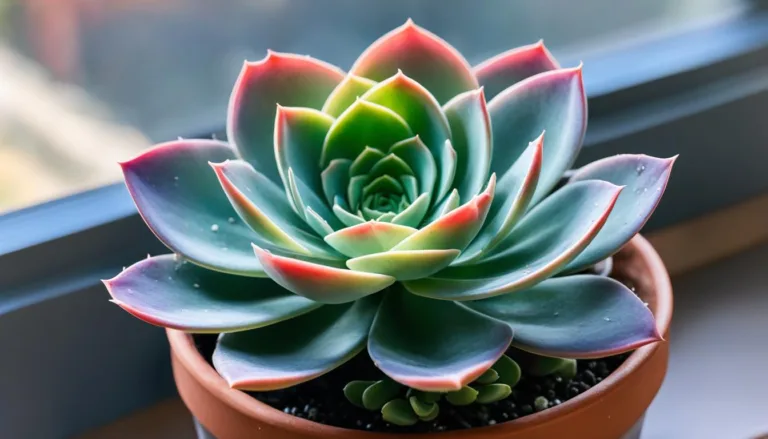
One Comment
Comments are closed.